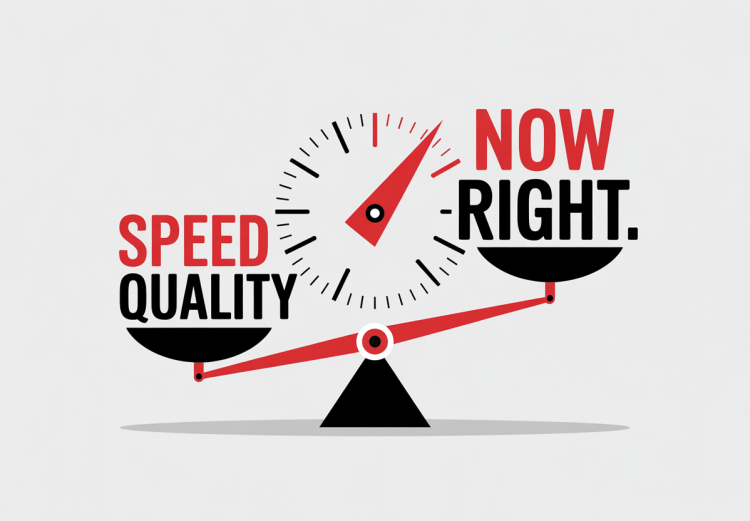In product development, there’s no such thing as a perfect decision. Every move you make comes with trade-offs. Speed sacrifices polish. Customization can kill scale. Short-term wins may blur the long-term vision.
And when teams try to do it all? They stall out.
The best innovators don’t avoid trade-offs. They manage them with clarity and intention. Let’s talk about how.
The Reality of Trade-Offs in Innovation
Innovation Sounds Exciting—But It's a Series of Tough Calls
You’re constantly choosing between two good options—or worse, two bad ones.
Every Great Idea Has a Cost
Resources are limited. Every time you say yes to something, you’re saying no to something else. That’s the hard truth of product work.
No roadmap is infinite. No sprint has room for everything. Understanding what you’re not doing is just as important as what you are.
Innovation Isn’t Just About What You Build—It’s About What You Don’t
The temptation is to do it all. Add every feature. Please every customer. But great products are often the result of disciplined restraint.
They’re defined by what’s left out. Focus doesn’t come from saying yes—it comes from saying no with purpose.
Trade-Off Paralysis Is a Real Threat to Progress
When teams can’t decide, nothing gets shipped. The backlog grows. Tension builds. Progress slows to a crawl.
The goal isn’t perfection—it’s momentum. You don’t need to make the “best” decision. You need to make a clear, intentional one—and move.
The Most Common Trade-Offs in Product Development
Speed vs. Quality
Move fast and break things, right? Not always. Speed can get you feedback quickly, but poor quality erodes trust.
Shipping fast is pointless if customers leave because it’s broken. Decide where your risk tolerance is—then commit.
Customization vs. Scalability
Custom builds make big clients happy. But too many one-offs will slow you down later. If you’re always tailoring, you lose the ability to grow with efficiency.
Sometimes it’s better to say no to one big client so you can serve 100 small ones better.
Short-Term Wins vs. Long-Term Vision
Quick wins are tempting. They get attention, boost morale, and generate momentum. But too many “quick wins” can pile up into a long-term mess.
Guard your vision, even if it means holding off on the flashy feature.
How to Prioritize Without Losing Momentum
Anchor Decisions to Core Product Principles
If you’ve done the work of defining product principles, use them. When a trade-off arises, ask:
- Does this align with what we stand for?
- Is this decision consistent with our product’s purpose?
Principles cut through noise. They give you a compass when the roadmap is cloudy.
Use Simple Frameworks to Force Clarity
Tools like RICE, MoSCoW, or Value vs. Effort matrices exist for a reason. They help turn subjective debates into structured conversations.
You don’t need a fancy model. You just need something that helps break the tie.
Communicate the Trade-Off, Not Just the Decision
When you make a call, don’t just explain what you chose. Explain what you chose not to do—and why. That transparency builds trust.
It also shows the team that you're thinking beyond the surface.
Real-World Examples of Smart Trade-Off Management
- Slack started as a stripped-down messaging tool—no video, no fancy features. They focused on nailing team communication, then scaled.
- Basecamp built fewer features than their competitors—on purpose. Their trade-off? Fewer bells and whistles in exchange for a clean, usable product.
- Figma resisted adding private file systems early on, focusing instead on real-time collaboration. That decision helped them dominate design teams.
In each case, clarity on trade-offs led to clear product direction.
Progress Requires Imperfect Decisions
You won’t get every call right. That’s not the goal.
Innovation isn’t about eliminating trade-offs. It’s about choosing well and moving forward with intent.
So when the next hard choice comes, don’t freeze. Don’t wait for perfect clarity. Pick the best path you can with the info you’ve got—and go. Progress depends on it.


